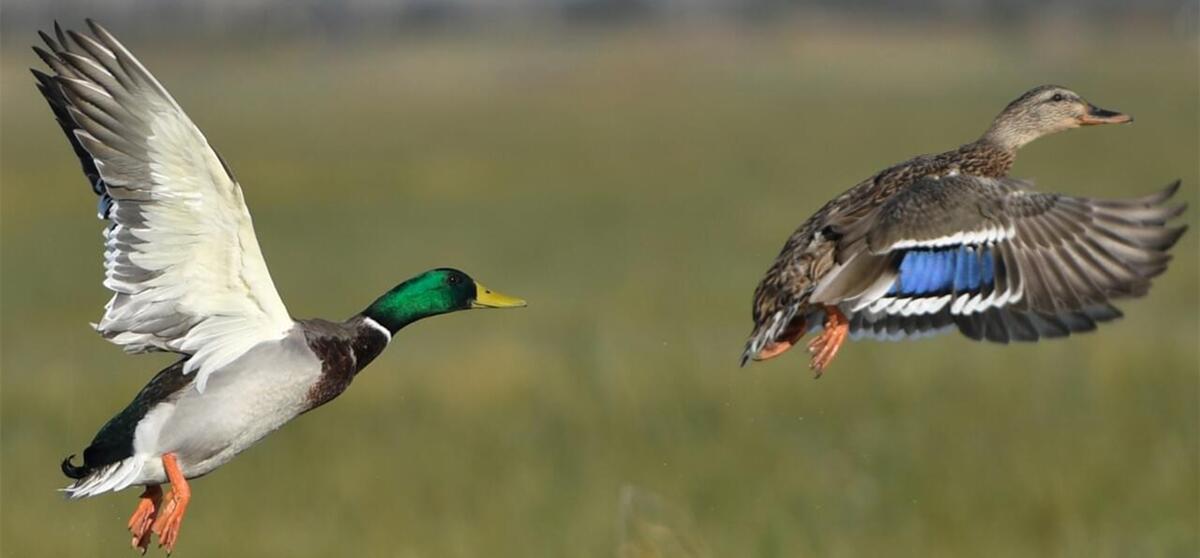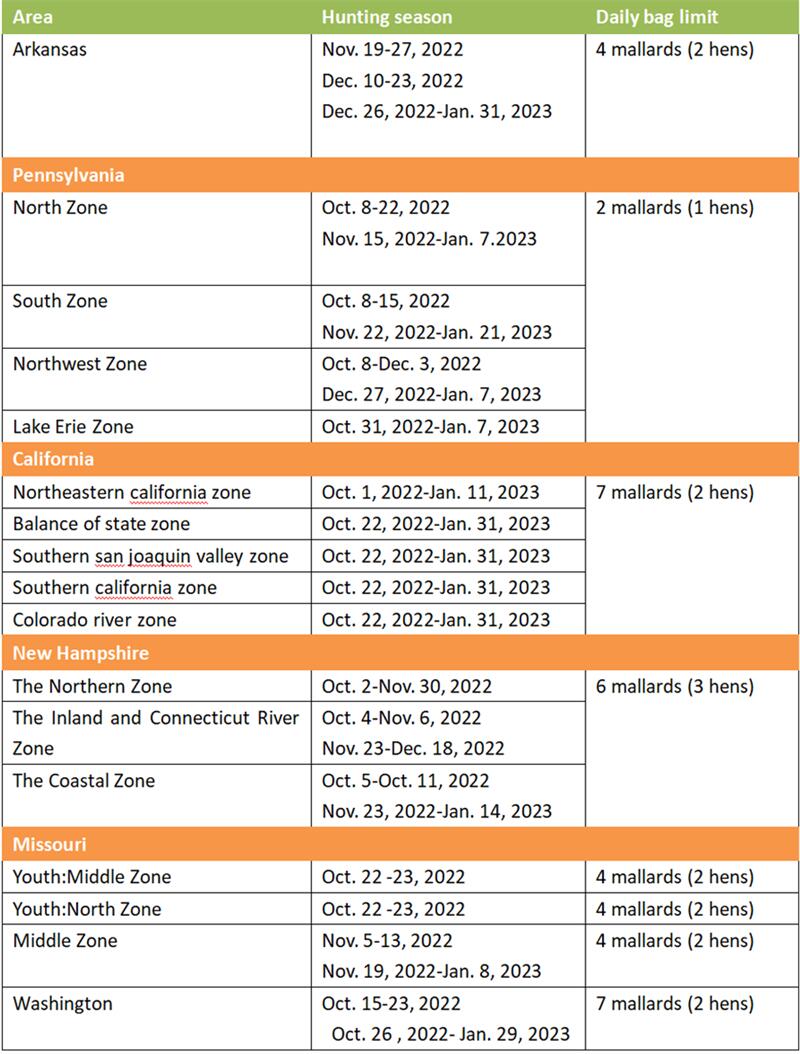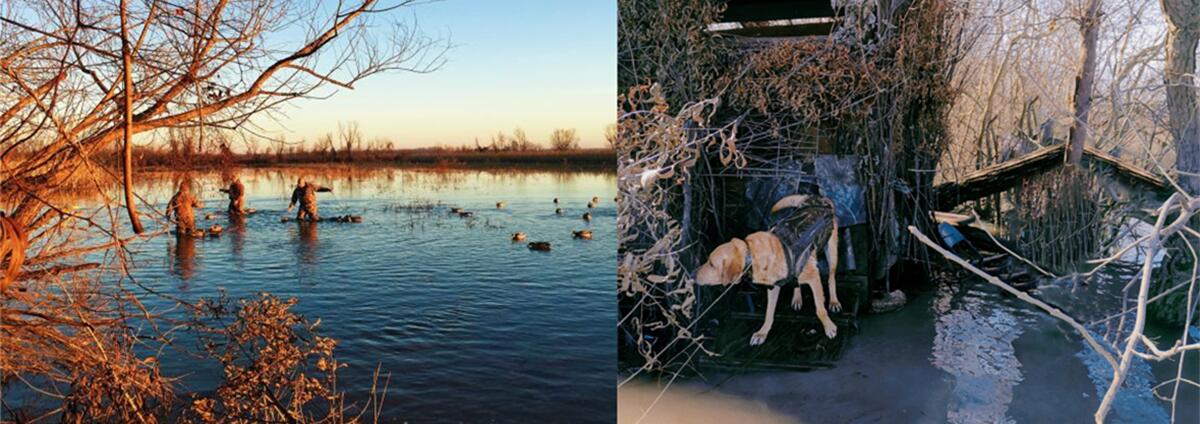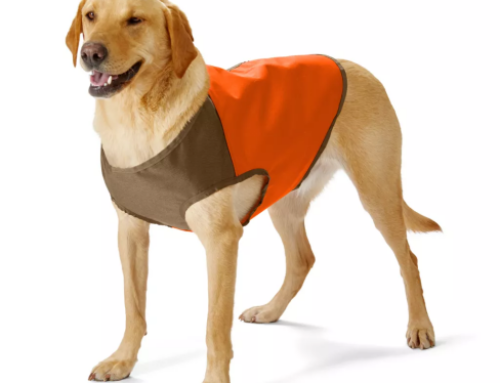When cold weather comes and marshes freeze, it’s time to gather up your decoys… and get ready for the best duck hunting of the season. Ask duck hunters what species is their favorite to chase, and a lot of them will immediately say “mallards.” Therefore, as a professional hunting clothing manufacturer and your loyal hunting partners, BOWINS has also collected some tips on mallard hunting, which we’re sharing with you today in the hope that it will help you a little in your hunting season.
——-Why do duck hunters like to chase mallards?
Mallard hunting is probably the most popular species of waterfowl hunted across North America. The drakes are commonly referred to as Greenheads and are targeted as one of the top species for table fare, and filling straps with plump greenheads remains one of waterfowling’s top achievements. There are good reasons: Mallards are big, sturdy birds, with the males, tipping the scales at up to 3 pounds. With those iridescent green heads and black rumps adorned with a pair of sharply curled feathers, the drakes are unmistakable. The smaller hens, like many females in the waterfowl world, are a drab brown. Both sexes have an area of white-bordered black or iridescent blue feathers called a speculum on their wings; males especially tend to have blue speculum feathers.
The most widely distributed of North American wildfowl species, mallards can be found in good to excellent numbers in all four flyways, which is another reason they’re favored by duck hunters. Mallards are hardy rogues, too, often remaining far north for as long as they can find feed and open water.

——-Distribution and habitat of mallards
The mallard is a dabbling duck that breeds throughout the temperate and subtropical Americas, Eurasia, and North Africa, and has been introduced to New Zealand, Australia, Peru, Brazil, Uruguay, Argentina, Chile, Colombia, the Falkland Islands, and South Africa.
Mallards live in wetlands, eat water plants and small animals, and are social animals preferring to congregate in groups or flocks of varying sizes.Unlike many waterfowl, mallards are considered an invasive species in some regions. It is a very adaptable species, being able to live and even thrive in urban areas which may have supported more localised, sensitive species of waterfowl before development.
——-Mallards hunting season
Today, waterfowl regulations are drafted under the auspices of an international treaty, occur within federal frameworks established for each flyway, and are adjusted by states to account for migration timing and hunter preferences. Each flyway is unique in its hunting culture, species affiliations, and waterfowl habitats. In the United States, the four flyways are given the same overall season framework, which runs from the September to January. Canada and Mexico also establish their waterfowl seasons under the MBTA mandate, but independently of other countries. In Europe, the mallards hunting season also runs from September to January in Denmark, July to January in the Netherlands and August to January in Germany.
Season lengths and bag limits vary among flyways and nations due to differences in migration patterns, hunter numbers, harvest pressure, and waterfowl abundance. We’ve compiled the 2022-2023 mallards hunting season and bag limit for some areas. Remember, the dates may vary depending on the local regulations, so be sure to check with your local before starting your hunting game.
——-Tips for hunting mallards
- Locations
Hardcore duck hunters always seek the best locations, especially when it comes to mallards. Like many ducks, mallards love fresh water. Mallards often roost on large bodies of water but spend much of the day loafing at small, hidden spots, including creeks, ditches and small rivers. Jump-shooting these places — especially those near refuges or large wildlife areas — can be productive. Late-season mallards especially love fresh combined corn, when corn is in short supply, they’ll also hit beans, peas, barley or winter wheat. Pay attention to crop and harvest conditions as you scout, which may be a potential hot spot.

2.Decoys
The most effective way to use decoys is to mimic what you are seeing the mallards doing. If they are sitting in small groups scattered throughout a wetland, use a small amount of decoys in the same fashion. If they landing in larger groups , use a larger spread of decoys to attract them.
And “Always put your decoys in the ripples and in the sunshine,” says Brandon Martin, creative director for Banded and founder of DayBreak Outdoors. “This gives ducks the illusion of the decoys being real. It gives ducks more confidence committing. If you leave decoys in glassy water, ducks know something is up. It’s the same with decoys in the shadows. It gives ducks a doubt in their minds, and they end up not coming into your decoy spread more times than not.”

3.The calling
Mallard sounds attract mallards. Early in season ducks aren’t yet call shy, and can be more responsive to calling. If you’re going to call, know when to stop. Once the mallards are locked in and coming into your spread, lay off the call. When the mallards start an erratic wing beat, hit them with a comeback call immediately to bring them back on line. If they look as if they may drift off-line, use single quacks andfeed calls to bring them back online.
4.The Dogs
If you hunt waterfowl, you need a retriever. You can get plenty of shots at birds without a dog. But the birds you hit will often be lost without a dog along to find them and bring them to you. Of the 147 dog breeds registered with the American Kennel Club, the Labrador retrievers and golden retrievers are the two most popular breeds used for hunting waterfowl. Of course, to make your dog a good duck hunting dog, you need to give them some training, such as stability training, hand signal training and obedience training. These little drills can really set a dog on the right path to being a much better companion during duck hunts.

5.Hunting Clothing
If you’re already an outdoor enthusiast, you know that a good hunting suit is crucial to your hunting game. Then how do you choose hunting clothing?
The first is to be waterproof. If hunting waterfowl is anything, it’s wet. It’s important to have waterproof apparel ready to go, which means checking the seams and patching any holes. A waterproof jacket, waterproof bibs will help make your hunt more comfortable.
The second thing is to wear the right camouflage. Concealment is always important, but it’s especially critical when working big groups of mallards. Wearing the right camouflage will undoubtedly help ensure that you are invisible. Keeping in mind that early in the season marshes can still be vibrant green, so be sure your camo reflects this, while later in the season it should be brown and tan.
The third point is to have plenty of pockets. Pockets take a lot! Even if you have a backpack, you’ll still want to keep certain items close at hand: ammunition, GPS, binoculars, rangefinder, snacks, forest tape, urine bottle, etc. Each item should have a place and be easily accessible.
Last but not least, make sure your hunting clothes are comfortable. If there’s one thing to remember when choosing your hunting clothes, it’s comfort. The more comfortable you are, the more focused you’ll be on the hunt. It’s impossible to stay still when it’s cold and wet. So it’s best to be warm, Bowins recommends the following hot selling styles, which have received good performance tests and customer feedback in previous sales.

BOWINS has a professional team which deeply understands the technical requirements of hunting clothing and focuses on the product and technical development, sample production, bulk order production of custom-tailored hunting clothing. BOWINS has over 15 years’ experience in the production of Hunting clothing, our partners are those famous hunting clothing brands in the Europe and America. High quality products, shorter delivery time and customer satisfaction are our long-term commitments to global clients. Hope to be your partner!

